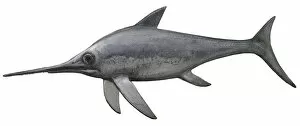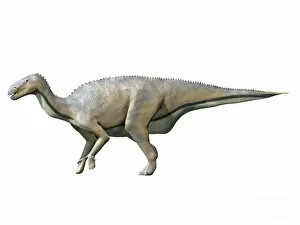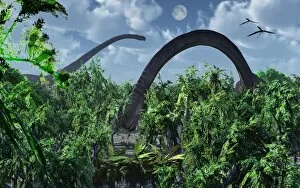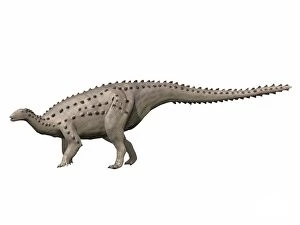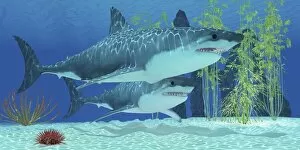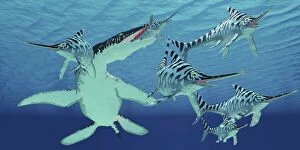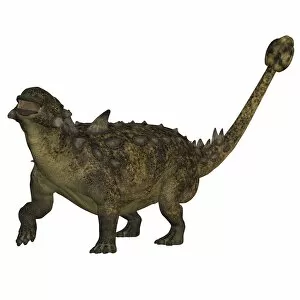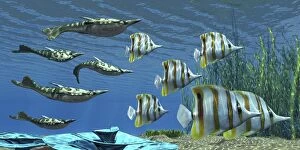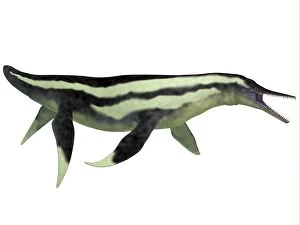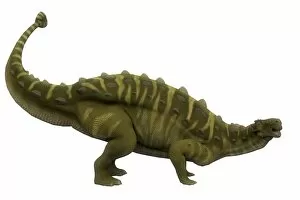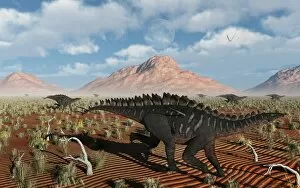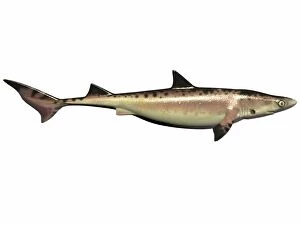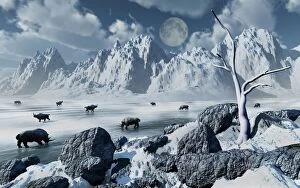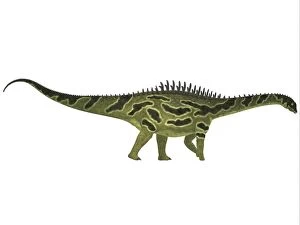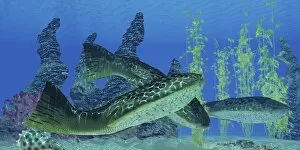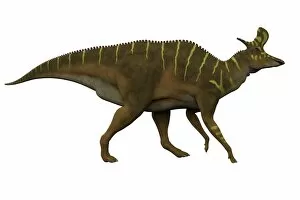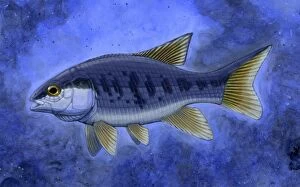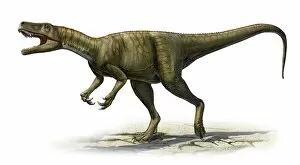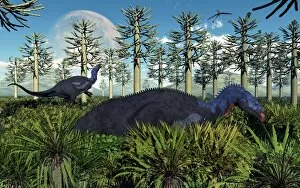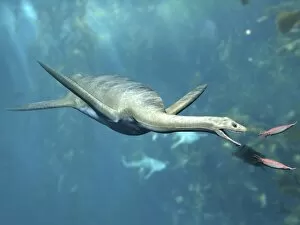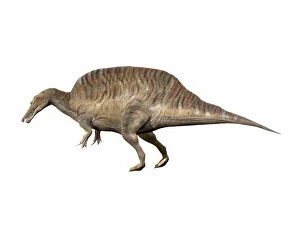Paleobiology Collection (page 4)
Paleobiology, the study of ancient life forms and their interactions, offers us a captivating glimpse into the prehistoric world
For sale as Licensed Images
Choose your image, Select your licence and Download the media
Paleobiology, the study of ancient life forms and their interactions, offers us a captivating glimpse into the prehistoric world. In one scene, an Alvarezsaurid bird fearlessly attends to its daily task of cleaning the massive mouth of a Giganotosaurus carolinii dinosaur, showcasing an intriguing symbiotic relationship between species. Meanwhile, a Tyrannosaurus Rex feasts on the carrion left behind by a fallen Triceratops, reminding us of nature's circle of life. Through meticulous 3D renderings, we can marvel at the intricate skeletal structure of an Ankylosaurus dinosaur or compare Cerapod dinosaurs to modern-day rhinos – highlighting both similarities and fascinating evolutionary adaptations. The contributions made by esteemed palaeontologist Stephen Gould cannot be overlooked as he unraveled many mysteries surrounding these ancient creatures. Immersing ourselves in this lost world takes us further back in time as we witness a Rubeosaurus majestically roaming through its prehistoric environment. The detailed rendering of a Tyrannosaurus Rex skeleton allows us to appreciate its sheer size and power that once dominated Earth. Delicate petrified wood serves as tangible evidence from eons past while mesmerizing artwork brings extinct creatures like the prehistoric cave bear and Jurassic life back to vivid existence. From Africa's Namibia comes exciting news with the discovery of Mesosaurus fossil near Keetmanshop – shedding light on how these remarkable beings thrived across continents. Even historical engravings from 1872 capture our imagination with depictions of Deinotherium, an extinct elephant-like creature that roamed our planet long ago. Paleobiology continues to unravel secrets buried beneath layers upon layers of time – allowing us to connect with our distant past and understand more about Earth's incredible journey through millennia.


